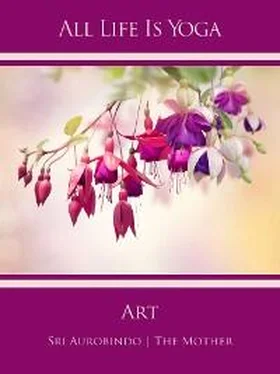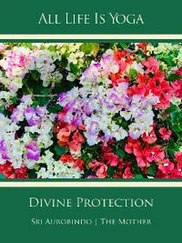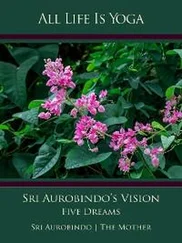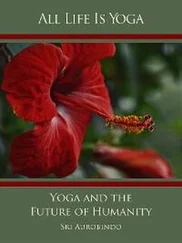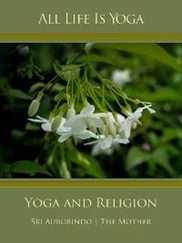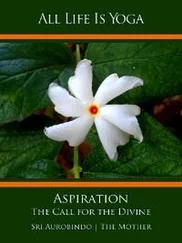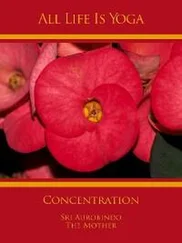What has been said of great creative art, that being the form in which normally our highest and intensest aesthetic satisfaction is achieved, applies to all beauty, beauty in Nature, beauty in life as well as beauty in art. We find that in the end the place of reason and the limits of its achievement are precisely of the same kind in regard to beauty as in regard to religion. It helps to enlighten and purify the aesthetic instincts and impulses, but it cannot give them their highest satisfaction or guide them to a complete insight. It shapes and fulfils to a certain extent the aesthetic intelligence, but it cannot justly pretend to give the definitive law for the creation of beauty or for the appreciation and enjoyment of beauty. It can only lead the aesthetic instinct, impulse, intelligence towards a greatest possible conscious satisfaction, but not to it; it has in the end to hand them over to a higher faculty which is in direct touch with the suprarational and in its nature and workings exceeds the intellect.
And for the same reason, because that which we are seeking through beauty is in the end that which we are seeking through religion, the Absolute, the Divine. The search for beauty is only in its beginning a satisfaction in the beauty of form, the beauty which appeals to the physical senses and the vital impressions, impulsions, desires. It is only in the middle a satisfaction in the beauty of the ideas seized, the emotions aroused, the perception of perfect process and harmonious combination. Behind them the soul of beauty in us desires the contact, the revelation, the uplifting delight of an absolute beauty in all things which it feels to be present, but which neither the senses and instincts by themselves can give, though they may be its channels, – for it is supra-sensuous, – nor the reason and intelligence, though they too are a channel, – for it is suprarational, supra-intellectual, – but to which through all these veils the soul itself seeks to arrive. When it can get the touch of this universal, absolute beauty, this soul of beauty, this sense of its revelation in any slightest or greatest thing, the beauty of a flower, a form, the beauty and power of a character, an action, an event, a human life, an idea, a stroke of the brush or the chisel or a scintillation of the mind, the colours of a sunset or the grandeur of the tempest, it is then that the sense of beauty in us is really, powerfully, entirely satisfied. It is in truth seeking, as in religion, for the Divine, the All-Beautiful in man, in nature, in life, in thought, in art; for God is Beauty and Delight hidden in the variation of his masks and forms. When, fulfilled in our growing sense and knowledge of beauty and delight in beauty and our power for beauty, we are able to identify ourselves in soul with this Absolute and Divine in all the forms and activities of the world and shape an image of our inner and our outer life in the highest image we can perceive and embody of the All-Beautiful, then the aesthetic being in us who was born for this end, has fulfilled himself and risen to his divine consummation. To find highest beauty is to find God; to reveal, to embody, to create, as we say, highest beauty is to bring out of our souls the living image and power of God.
*
The highest aim of the aesthetic being is to find the Divine through beauty; the highest Art is that which by an inspired use of significant and interpretative form unseals the doors of the spirit. But in order that it may come to do this greatest thing largely and sincerely, it must first endeavour to see and depict man and Nature and life for their own sake, in their own characteristic truth and beauty; for behind these first characters lies always the beauty of the Divine in life and man and Nature and it is through their just transformation that what was at first veiled by them has to be revealed. The dogma that Art must be religious or not be at all, is a false dogma, just as is the claim that it must be subservient to ethics or utility or scientific truth or philosophic ideas. Art may make use of these things as elements, but it has its own svadharma, essential law, and it will rise to the widest spirituality by following out its own natural lines with no other yoke than the intimate law of its own being.
*
In a sense spirituality is the highest art, the art of life; for it aims at creating a life of beauty pure in line, faultless in rhythm, replete with strength, illumined with light and vibrant with delight.
* * *
Chapter 2
The Divine as Beauty
Beauty is the way in which the physical expresses the Divine – but the principle and law of Beauty is something inward and spiritual which expresses itself through the form.
*
Beauty is the special divine Manifestation in the physical as Truth is in the mind, Love in the heart, Power in the vital. Supramental beauty is the highest divine beauty manifesting in Matter.
*
God as beauty, Srikrishna in Brindavan, Shyamasundara, is not only Beauty, He is also Love, and without perfect love there cannot be perfect beauty, and without perfect beauty there cannot be perfect delight.
*
The general power of Delight is love and the special mould which the joy of love takes is the vision of beauty. The God-lover is the universal lover and he embraces the All-blissful and All-beautiful. When universal love has seized on his heart, it is the decisive sign that the Divine has taken possession of him; and when he has the vision of the All-beautiful everywhere and can feel at all times the bliss of his embrace, that is the decisive sign that he has taken possession of the Divine. Union is the consummation of love, but it is this mutual possession that gives it at once the acme and the largest reach of its intensity. It is the foundation of oneness in ecstasy.
*
Beauty is Ananda taking form – but the form need not be a physical shape. One speaks of a beautiful thought, a beautiful act, a beautiful soul. What we speak of as beauty is Ananda in manifestation; beyond manifestation beauty loses itself in Ananda or, you may say, beauty and Ananda become indistinguishably one.
*
Love and Beauty are powers of Ananda as Light and Knowledge are of Consciousness. Force is inherent in Consciousness and may be called part of the Divine Essence. Ananda is always there even when Sachchidananda takes on an impersonal aspect or appears as the sole essential Existence; but Love needs a Lover and Beloved, Beauty needs a manifestation to show itself. So in the same way Consciousness is always there, but Knowledge needs a manifestation to be active, there must be a Knower and a Known. That is why the distinction is made between Ananda which is of the essence and Beauty which is a power or expression of Ananda in manifestation. These are of course philosophical distinctions necessary for the mind to think about the world and the Divine.
* * *
Конец ознакомительного фрагмента.
Текст предоставлен ООО «ЛитРес».
Прочитайте эту книгу целиком, купив полную легальную версию на ЛитРес.
Безопасно оплатить книгу можно банковской картой Visa, MasterCard, Maestro, со счета мобильного телефона, с платежного терминала, в салоне МТС или Связной, через PayPal, WebMoney, Яндекс.Деньги, QIWI Кошелек, бонусными картами или другим удобным Вам способом.
